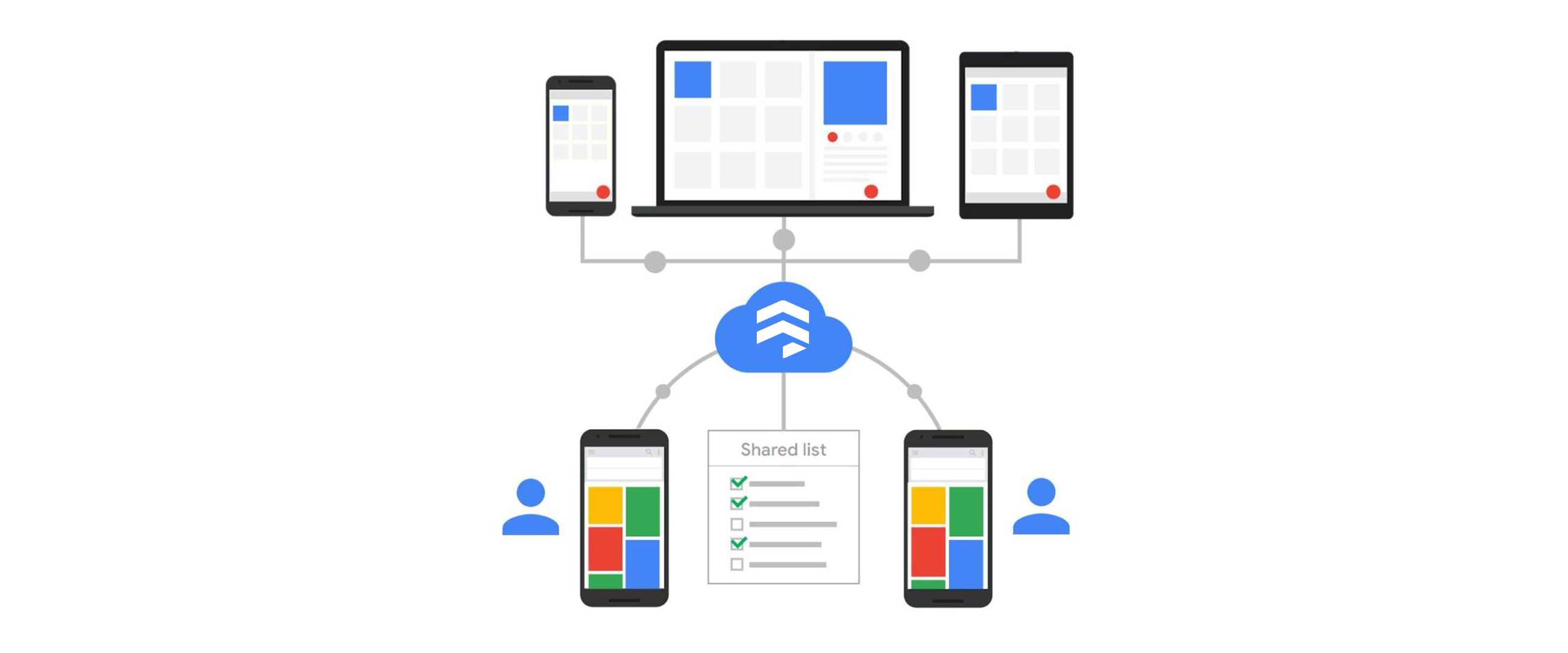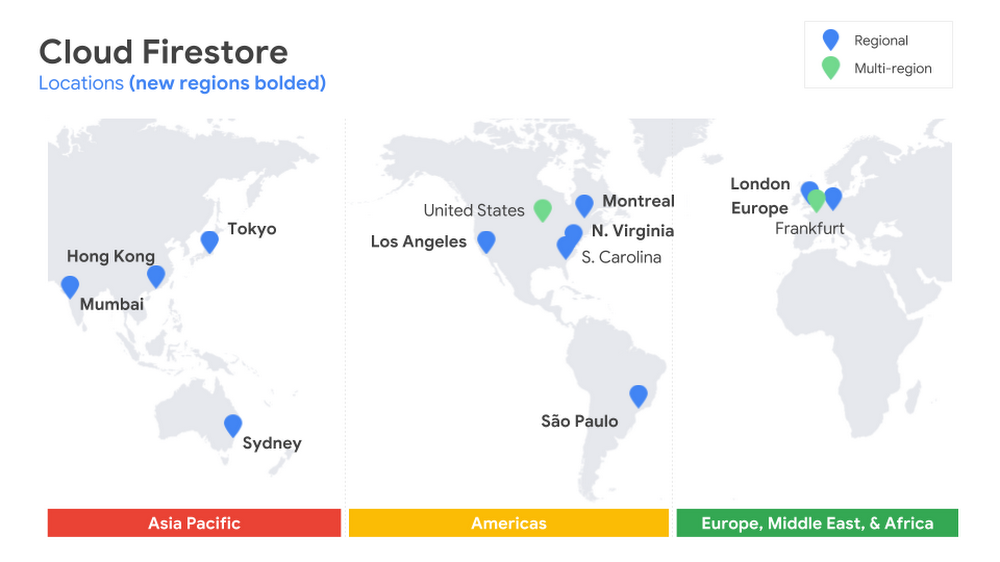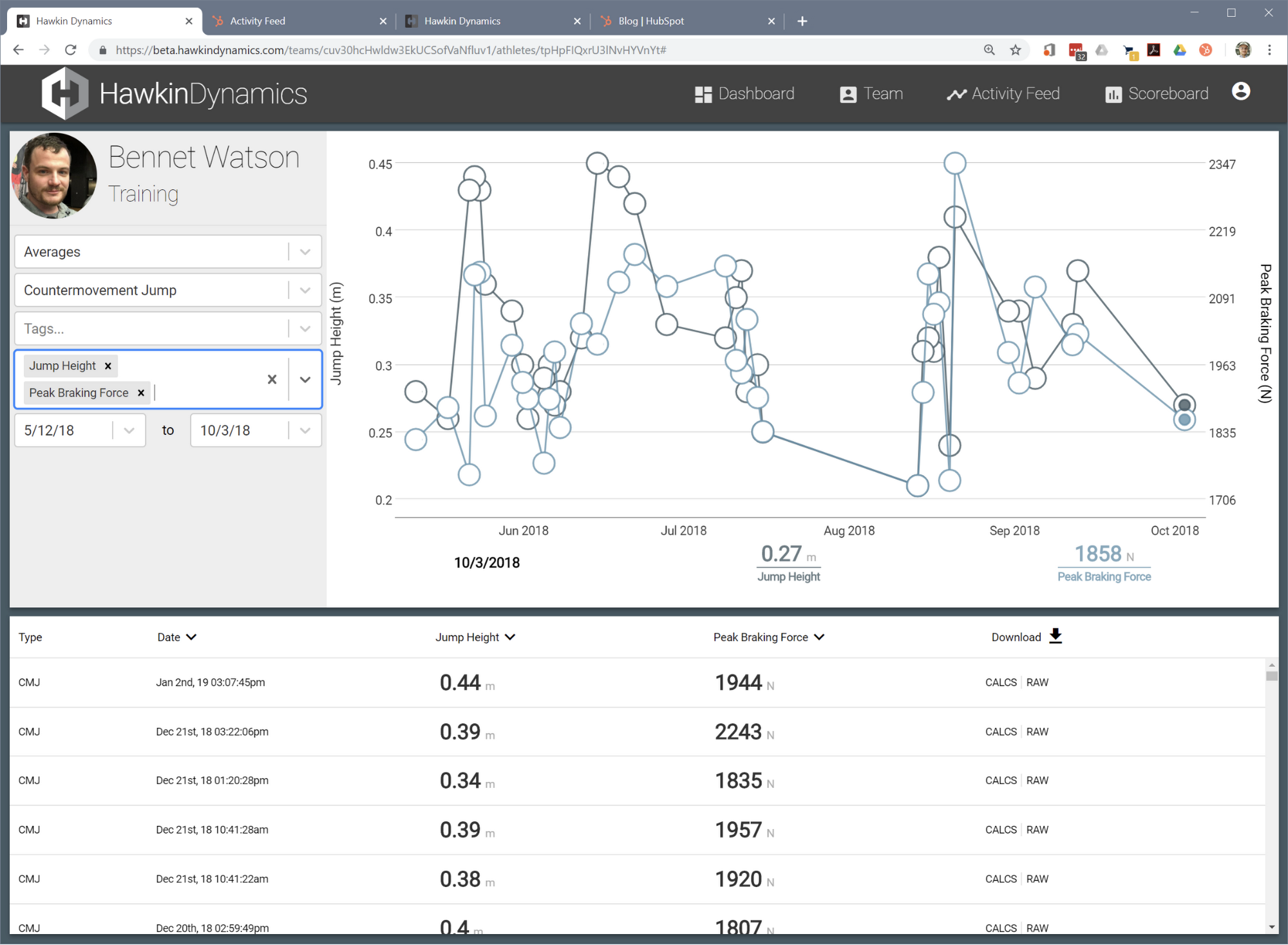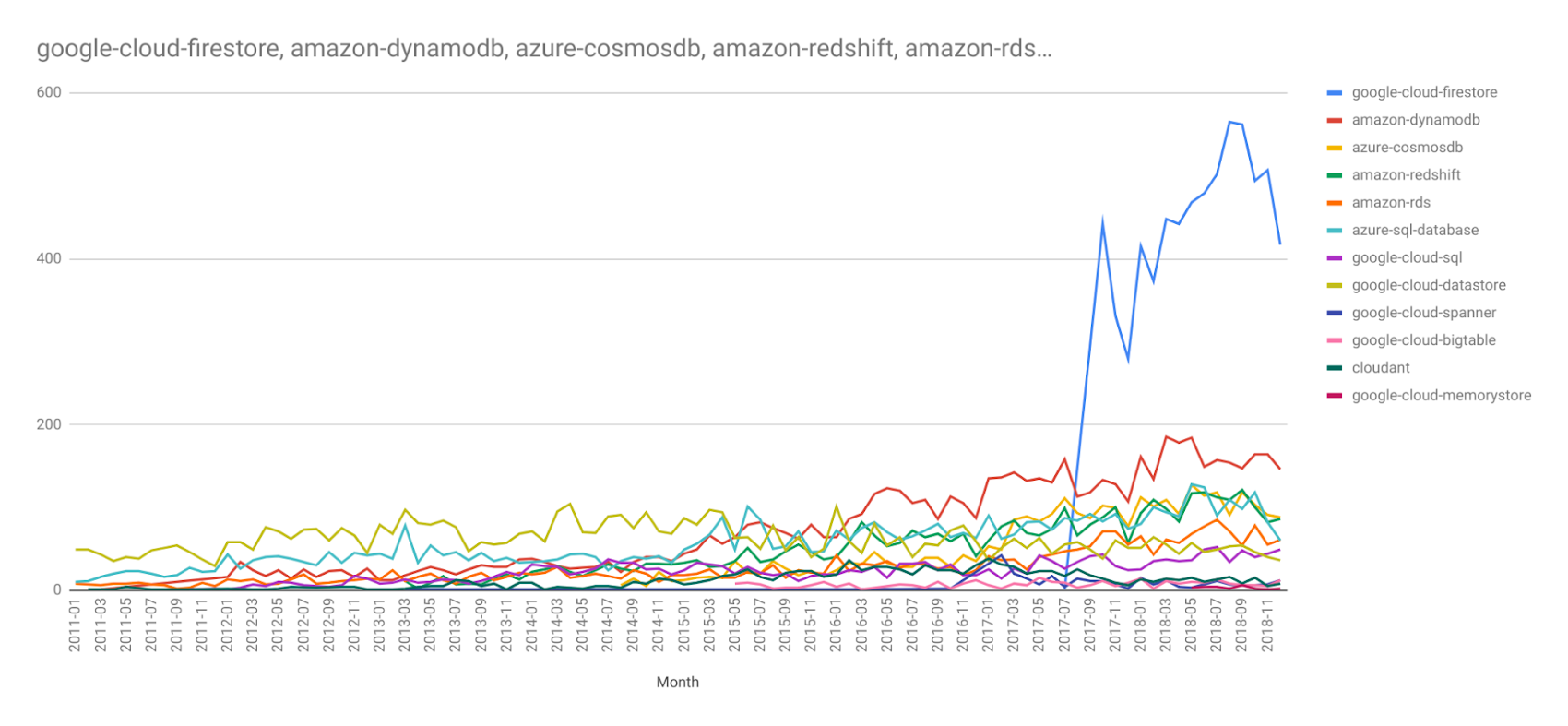NoSQL for the serverless age: Announcing Cloud Firestore general availability and updates

Amit Ganesh
VP Engineering, Databases
Dan McGrath
Product Manager
As modern application development moves away from managing infrastructure and toward a serverless future, we're pleased to announce the general availability of Cloud Firestore, our serverless, NoSQL document database. We're also making it available in 10 new locations to complement the existing three, announcing a significant price reduction for regional instances, and enabling integration with Stackdriver for monitoring.
Cloud Firestore is a fully managed, cloud-native database that makes it simple to store, sync, and query data for web, mobile, and IoT applications. It focuses on providing a great developer experience and simplifying app development with live synchronization, offline support, and ACID transactions across hundreds of documents and collections. Cloud Firestore is integrated with both Google Cloud Platform (GCP) and Firebase, Google’s mobile development platform. You can learn more about how Cloud Firestore works with Firebase here. With Cloud Firestore, you can build applications that move swiftly into production, thanks to flexible database security rules, real-time capabilities, and a completely hands-off auto-scaling infrastructure.
Cloud Firestore does more than just core database tasks. It’s designed to be a complete data backend that handles security and authorization, infrastructure, edge data storage, and synchronization. Identity and Access Management (IAM) and Firebase Auth are built in to help make sure your application and its data remain secure. Tight integration with Cloud Functions, Cloud Storage, and Firebase’s SDK accelerates and simplifies building end-to-end serverless applications. You can also easily export data into BigQuery for powerful analysis, post-processing of data, and machine learning.
Building with Cloud Firestore means your app can seamlessly transition from online to offline and back at the edge of connectivity. This helps lead to simpler code and fewer errors. You can serve rich user experiences and push data updates to more than a million concurrent clients, all without having to set up and maintain infrastructure. Cloud Firestore’s strong consistency guarantee helps to minimize application code complexity and reduces bugs. A client-side application can even talk directly to the database, because enterprise-grade security is built right in. Unlike most other NoSQL databases, Cloud Firestore supports modifying up to 500 collections and documents in a single transaction while still automatically scaling to exactly match your workload.
What’s new with Cloud Firestore
New regional instance pricing. This new pricing takes effect on March 3, 2019 for most regional instances, and is as low as 50% of multi-region instance prices.
Data in regional instances is replicated across multiple zones within a region. This is optimized for lower cost and lower write latency. We recommend multi-region instances when you want to maximize the availability and durability of your database.
SLA now available. You can now take advantage of Cloud Firestore’s SLA: 99.999% availability for multi-region instances and 99.99% availability for regional instances.
New locations available. There are 10 new locations for Cloud Firestore:
Multi-region
Europe (eur3)
North America (Regional)
Los Angeles (us-west2)
Montréal (northamerica-northeast1)
Northern Virginia (us-east4)
South America (Regional)
São Paulo (southamerica-east1)
Europe (Regional)
London (europe-west2)
Asia (Regional)
Mumbai (asia-south1)
Hong Kong (asia-east2)
Tokyo (asia-northeast1)
Australia (Regional)
Sydney (australia-southeast1)


Stackdriver integration (in beta). You can now monitor Cloud Firestore read, write and delete operations in near-real time with Stackdriver.
More features coming soon. We're working on adding some of the most requested features to Cloud Firestore from our developer community, such as querying for documents across collections and incrementing database values without needing a transaction.
As the next generation of Cloud Datastore, Cloud Firestore is compatible with all Cloud Datastore APIs and client libraries. Existing Cloud Datastore users will be live-upgraded to Cloud Firestore automatically later in 2019. You can learn more about this upgrade here.
Adding flexibility and scalability across industries
Cloud Firestore is already changing the way companies build apps in media, IoT, mobility, digital agencies, real estate, and many others. The unifying themes among these workloads include: the need for mobility even when connectivity lapses, scalability for many users, and the ability to move quickly from prototype to production. Here are a few of the stories we’ve heard from Cloud Firestore users.
When opportunity strikes...
In the highly competitive world of shared, on-demand personal mobility via cars, bikes, and scooters, the ability to deliver a differentiated user experience, iterate rapidly, and scale are critical. The prize is huge. Skip provides a scooter-sharing system where shipping fast can have a big impact. Mike Wadhera, CTO and Co-founder, says, "Cloud Firestore has enabled our engineering and product teams to ship at the clock-speed of a startup while leveraging Google-scale infrastructure. We're delighted to see continued investment in Firebase and the broader GCP platform.”
Another Cloud Firestore user, digital consultancy The Nerdery, has to deliver high-quality results in a short period of time, often needing to integrate with existing third-party data sources. They can’t build up and tear down complicated, expensive infrastructure for every client app they create. “Cloud Firestore was a great fit for the web and mobile applications we built because it required a solution to keep 40,000-plus users apprised of real-time data updates,” says Jansen Price, Principal Software Architect. “The reliability and speed of Cloud Firestore coupled with its real-time capabilities allowed us to deliver a great product for the Google Cloud Next conferences.”
Reliable information delivery
Incident response company Now IMS uses real-time data to keep citizens safe in crowded places, where cell service can get spotty when demand is high. “As an incident management company, real-time and offline capabilities are paramount to our customers,” says John Rodkey, Co-founder. “Cloud Firestore, along with the Firebase Javascript SDK, provides us with these capabilities out of the box. This new 100% serverless architecture on Google Cloud enables us to focus on rapid application development to meet our customers' needs instead of worrying about infrastructure or server management like with our previous cloud."
Regardless of the app, users want the latest information right away, without having to click refresh. The QuintoAndar mobile application connects tenants and landlords in Brazil for easier apartment rentals. “Being able to deliver constantly changing information to our customers allows us to provide a truly engaging experience. Cloud Firestore enables us to do this without additional infrastructure and allows us to focus on the core challenges of our business,” says Guilherme Salerno, Engineering Manager at QuintoAndar.
Real-time, responsive apps, happy users
Famed broadsheet and media company The Telegraph uses Cloud Firestore so registered users can easily discover and engage with relevant content. The Telegraph wanted to make the user experience better without having to become infrastructure experts in serving and managing data to millions of concurrent connections. “Cloud Firestore allowed us to build a real-time personalized news feed, keeping readers informed with synchronized content state across all of their devices,” says Alex Mansfield-Scaddan, Solution Architect. “It allowed The Telegraph engineering teams to focus on improving engagement with our customers, rather than becoming real-time database and infrastructure experts."
On the other side of the Atlantic, The New York Times used Cloud Firestore to build a feature in The Times’ mobile app to send push notifications updated in real time for the 2018 Winter Olympics. In previous approaches to this feature, scaling had been a challenge. The team needed to track each reader’s history of interactions in order to provide tailored content for particular events or sports. Cloud Firestore allowed them to query data dynamically, then send the real-time updates to readers. The team was able to send more targeted content faster.
Delivering powerful edge storage for IoT devices
Athlete testing technology company Hawkin Dynamics was an early, pre-beta adopter of Cloud Firestore. Their pressure pads are used by many professional sports teams to measure and track athlete performance. In the fast-paced, high-stakes world of professional sports, athletes can’t wait around for devices to connect or results to calculate. They demand instant answers even if the WiFi is temporarily down. Hawkin Dynamics uses Cloud Firestore to bring real-time data to athletes through their app dashboard, shown below.
“Our core mission at Hawkin Dynamics is to help coaches make informed decisions regarding their athletes through the use of actionable data. With real-time updates, our users can get the data they need to adjust an athlete’s training on a moment-by-moment basis,” says Chris Wales, CTO. “By utilizing the powerful querying ability of Cloud Firestore, we can provide them the insights they need to evaluate the overall efficacy of their programs. The close integrations with Cloud Functions and the other Firebase products have allowed us to constantly improve on our product and stay responsive to our customers’ needs. In an industry that is rapidly changing, the flexibility afforded to us by Cloud Firestore in extending our applications has allowed us to stay ahead of the game.”


Getting started with Cloud Firestore
We’ve heard from many of you that Cloud Firestore is helping solve some of your most timely development challenges by simplifying real-time data and data synchronization, eliminating server-side code, and providing flexible yet secure database authentication rules. This reflects the state of the cloud app market, where developers are exploring lots of options to help them build better and faster while also providing modern user experiences. This glance at Stack Overflow questions gives a good picture of some of these trends, where Cloud Firestore is a hot topic among cloud databases.

We’ve seen close to a million Cloud Firestore databases created since its beta launch. The platform is designed to serve databases ranging in size from kilobytes to multiple petabytes of data. Even a single application running on Cloud Firestore is delivering more than 1 million real-time updates per second to users. These apps are just the beginning. To learn more about serverless application development, take a look through the archive of the recent application development digital conference.
We’d love to hear from you, and we can’t wait to see what you build next. Try Cloud Firestore today for your apps.



